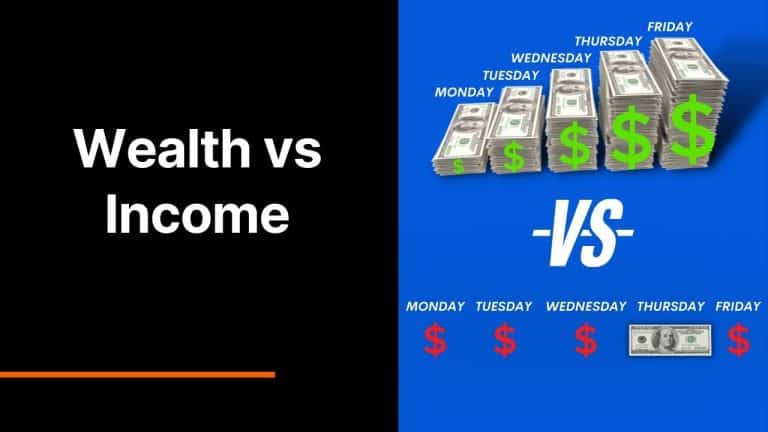Types of Foreign Trade and How The Economy Works
Types of foreign trade and understanding how the economy works can be confusing. And you probably don’t care that much.
But if you plan on building wealth you should.
On the one hand, the economy is a term that almost everyone has heard. But on the other hand, only a few people know how the economy actually works.
One reason for this is because economics is a broad subject, and it can mean different things depending on who you ask.
Another source of confusion is because economics is closely tied to other major subjects like social sciences and politics. Now, you can easily write an entire book about economics, and it will likely be boring to read.
Hence, this article will cover a section of economics that significantly impacts your wealth creation.
But before we get into that…
Let’s Look at The 3 Types of Foreign Trade:
Import Trade: Import trade is all about the purchase of goods by one country from another country. Or put another way the inflow of goods and services from a foreign country back to the home country.
Export Trade: Export trade is the sale of goods from one country to another country. Or the outflow of goods from a home country to a foreign country.
Entrepot Trade: Entrepot trade is also known as Re-export. It’s the purchase of goods from one country and then that country sells them back to another country after some processing and adding value to the item.
Now let’s look at how these three different types of foreign trade impact the economy.
The Basics of How The Economy Works
As mentioned above, economics is a very broad subject.
However, its basic principles are elementary to understand. In fact, it’s so easy you can boil everything down into a single concept. And, that concept is called the transaction.
A transaction is an exchange. The buying or selling of goods.
For example, let’s say you want to get some bread. You go to a bakery, pay the baker, and in exchange, he or she gives you the bread. This is what a transaction is.
Hence, at its core, a major economy is just billions or trillions of small transactions. And foreign trade is all about transactions between businesses, countries, and people all across the globe.
Supply and Demand
This is where things start to get complicated.
Let’s look at the example above about buying bread from a baker. And step back a bit and analyze that further.
You have money, and the baker wants your money. The baker has bread, and you want his or her bread. You both agreed to exchange money for bread, but both of you must agree on the price first.
But how is price determined? The answer to that is supply and demand.
If supply is low and the demand is high, the sellers of the bread have negotiating power. This means they have the power to raise prices as there’s less competition because of the low supply. And the demand for their goods is high.
On the other hand, if supply is high and demand is low, the buyers have the upper hand. This is because the sellers are competing with each other to get your business. In most cases, the sellers will likely lower their prices.
Supply and demand apply to almost every facet of the economy.
For example, if people are complaining about lower salaries. One major reason for that is the supply of that specific labor is high. And the demand is low.
This is why companies can afford to pay lower salaries. After all, they can always find someone to do the same job at a lower price because workers are competing to get that specific job. So, if you want to increase your earnings through a salary, you will need to find a specific job market with higher demand and lower competition.
It’s the reason why educating yourself is very important in today’s economy, skills matter.
If your labor has too much competition and lower demand, then don’t be afraid to educate yourself. By doing so, you can move into a market that has lesser supply and higher demand.
And now that you know the basics of how the economy works and the different types of foreign trade, it’s time to move to the different ‘market seasons.’
Market Seasons
Let’s start with – why do market seasons exist?
Because there are a lot of different factors behind answering this question. But, market seasons exist mainly because of supply and demand. Remember, these two opposing forces are trying to balance each other all the time.
Like a pendulum scale, the two sides swing back and forth before finding the equilibrium point.
But, unlike the pendulum scale in which the two sides are constant, the supply and demand sides are always moving. So, this swinging action moves continuously as time moves forward.
This swinging action results in the market seasons. And the economy has plenty of different aspects with its own seasons. But let’s cover the most important ones that will significantly impact your wealth building.
The two economic factors that you should pay attention to when building wealth are the inflation rate and growth rate.
And since inflation is balanced by deflation and growth is balanced by decline, this produces a total of four different market seasons:
- Growth – trending up of growth
- Decline – trending down of growth
- Inflation – trending up of prices
- Deflation – trending down of prices
Why Do I Need to Know These Seasons?
Simple, what do you think will sell more during a rainy season – an umbrella or ice cream? In other words, for each season, there’s an investment vehicle that’ll perform the best.
Growth:
Traditionally, to know if you are in the growth season, you look at the Gross Domestic Product (GDP).
If it’s trending up, then you are in the growth phase of the economy. This means more businesses are still being profitable, which then drives up the value of stocks. In such a time, the best-performing investment vehicles are stocks and corporate bonds.
Decline:
If the GDP is in decline, that means the goods of the country are not being bought so much. The different types of foreign trade have all slowed down.
Leading to fewer and fewer companies becoming profitable. When this happens, staying in the stock market is generally a bad idea.
And the best-performing vehicles for such a market condition are the ones that’ll give out a guaranteed return. Or as close to a guaranteed return and aren’t reliant on the growth rate of the market.
The vehicles that’ll fit the bill are treasury bonds and inflation-linked bonds.
Inflation:
If the inflation rates are trending up and continue to do so, it’s only a matter of time before the market overheats.
Basically, this means the prices of goods are rising so fast people can’t afford them. And this may cause a sudden crash in the market as people will stop buying. Plus, keep in mind consumer buying is what drives growth and fuels the different types of foreign trade we covered above.
If many people suddenly stop buying, growth could plummet abruptly. Which then causes a lot of companies to close down at once. This would lead to plenty of problems like unemployment and civil unrest.
Because for every inflation, there’s also a need for deflation.
And there are ways you can do this. One is to let it crash suddenly. Or, you can slow the process so it won’t be so sudden. To preserve stability, countries will often employ the second option.
To do that, central banks will start charging high-interest rates. As a result, companies are not so happy about borrowing money because it’s become more expensive to do so.
And by slowing down the expansion of different companies, you are also slowing down the inflation rate. It’s the reason why it’s not a good idea to stay in stocks if the inflation rate is at dangerous levels.
For such a season, commodities, gold, and bonds are your best bet. Commodities will always perform better in such an event since people will always buy commodity goods.
Gold will act as a store of value, protecting your money from the deteriorating effects of inflation. But I recommend
Deflation:
If the inflation rate is trending down, then the market is in a state of deflation. And too much deflation is very dangerous.
This is why central banks will implement measures that attempt to jumpstart the market again. One way of doing so is the lowering of interest rates.
This will allow companies to start borrowing for growth and expansion. Hence, stocks are a great idea in the later stages of a deflating market since you can get in sooner.
But the problem with the advice above is that it’s hard to know when and where the market will stop deflating and inflating.
This is why you need to protect yourself before that event actually happens. It’s the reason why treasury bonds are also a good idea during a deflating market.
The Economy and a Guide to Different Types of Foreign Trade
This article has covered plenty of grounds on how the economy works.
However, this is barely scratching the surface. Having said that, taking note of the subjects mentioned above should point you in the right direction in terms of performing well no matter the kind of economic environment.
And if you want to learn more about the economy here is another quick guide that goes into more detail.






